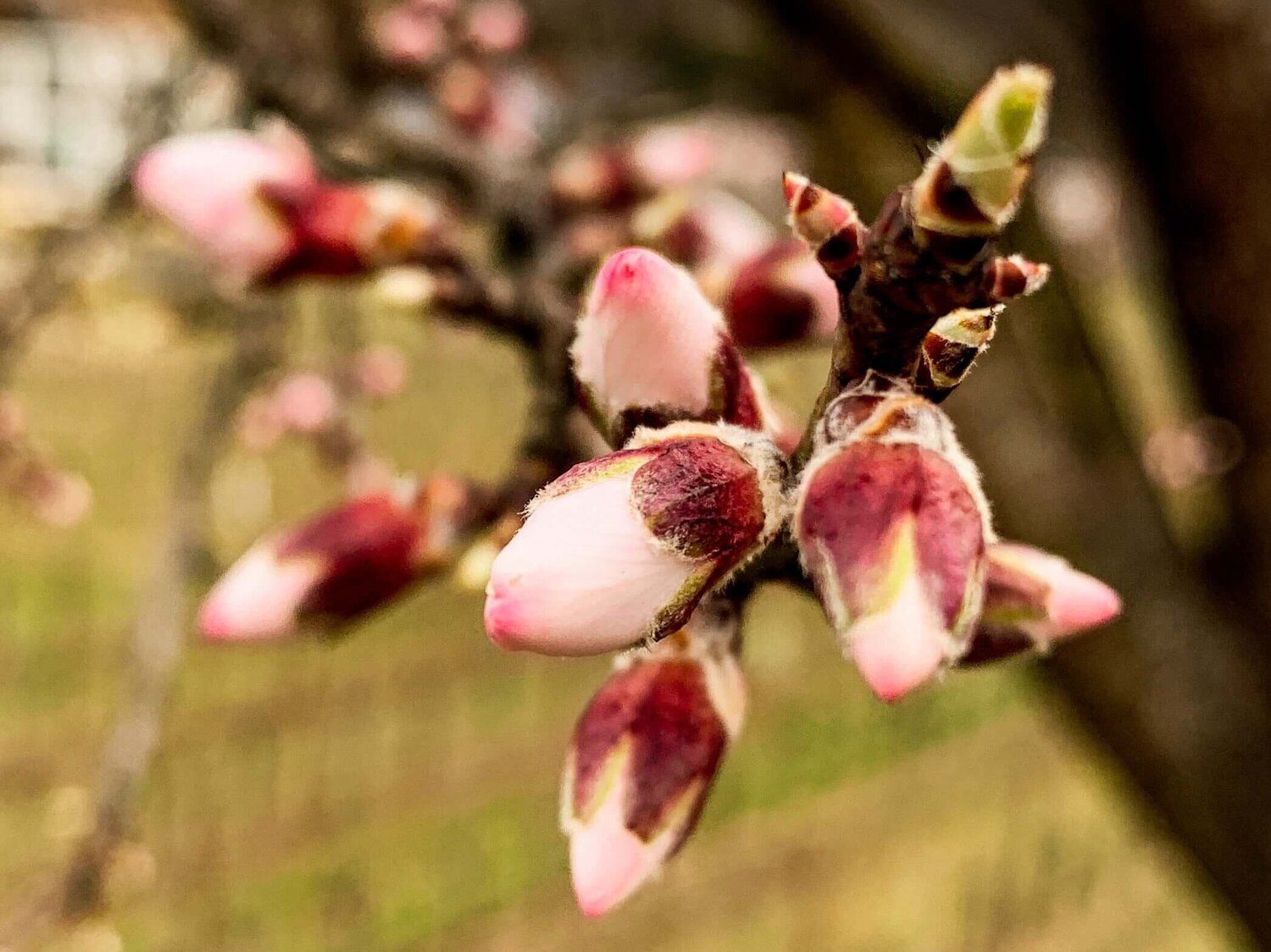Entheos - God Within
Apr 12
/
Savoy Stevens

Eastertide begs the question, is newness possible? Can life fill the places where death lurks? Can beauty win over ugliness and violence?
Right now, the buds of the citrus trees in my backyard are on the brink of blossom. Tightly closed buds, like tiny fists, will relax and unfurl soon, filling the air with their sweet honey scent. They are like tightly held dreams, wishes, and ideas, incubating all winter long, are on the brink of realization. The “dearest freshness deep down things” [1] call life forward reminding us that death is not the end.
Such is the enthusiasm of spring - a world full of newness and expectation. Rene Dubos, the French microbiologist, imagines a “force” that motivates everything from the inside out and renews the world time and again. Setting into motion seasons of seemingly eternal, rebirth and creativity. He calls this force, entheos, literally translated “a god within;” [2] the word from which we derive the word enthusiasm.
Approaching life in this way acknowledges that everything lives, thrives, rejoices and even grieves and dies in God. It recognizes God is in all conditions of embodied life. The Holy Spirit then, as the purveyor of hope and renewal, the bringer of all things new, marks life inside and out. McFague notes, “God and the world are not two separate realities that exist independently and must somehow find each other. Rather the world is “charged” with God as is with electricity.”[3] This “God within” accounts for much of the movement within our lives.
The exuberance of nature in the spring appears almost indifferent to dangers. Despite the suffering, despair, and ugliness created by racial conflicts, national rivalries, food shortages, and pollution, the bells of Easter always lift us on waves of hope. The experience of a spring day is enough to assure us that, eventually, life will triumph over death. There is an inherent hope present in the universe.
This entheos, “God within”, is the provocateur of hope and renewal, as the Spirit of God is the source of transforming energy among all creatures; initiating novelty and newness, instigating change, transforming what is dead into new stretches of life. As mover and encourager of what tends toward stasis, the Holy Spirit as entheos animates human creativity and joy in the struggle.
If God is present everywhere, with “warm breast and bright wings” brooding over the world,[4] then nothing can be totally negative or final or fearful (even despair or death), because everything happens within God’s love. There is always hope for something else, something more, something good might happen (yes, even in death), because we live and die in God’s world. The action of the Spirit's preparing, developing and hoping moves through religious dimensions of life. The everyday is infused with the Spirit. Unfolding the freshness of God’s goodness and care.
Where do you long to experience newness in your life today?
May the enthusiasm of the ever unfolding world draw those places forward into new life.
Notes:
1 Hopkins, Gerard Manley. God’s Grandeur, 1877
2 Dubos, Rene. A God Within, 1984
3 McFague, Sallie. A New Climate for Theology: God, the World, and Global Warming, 2008. p 162
4 Hopkins, Gerard Manley. God’s Grandeur, 1877

Savoy Stevens
Savoy Stevens, M.Div. is a spiritual director and minister in the Bay Area. She holds a Master’s of Divinity, with a concentration in Spiritual Formation from Portland Seminary and was trained, supervised, and certified as a spiritual director through George Fox University. Her postgraduate coursework includes Interfaith Studies at the University of Wales, Trinity Saint David. Savoy practices spiritual direction from an ecumenical, non-denominational perspective, welcoming directees from all faith traditions. She approaches direction sessions with curiosity and acceptance, listening deeply for the resonance of the Divine in the grit of everyday life. She asks questions and offers her undivided attention as a reflective tool for increasing your sense of the Divine. She considers spiritual direction a radical act of resistance in a culture consumed with certainty, overexposure, and noise.
Savoy Stevens, M.Div. is a spiritual director and minister in the Bay Area. She holds a Master’s of Divinity, with a concentration in Spiritual Formation from Portland Seminary and was trained, supervised, and certified as a spiritual director through George Fox University. Her postgraduate coursework includes Interfaith Studies at the University of Wales, Trinity Saint David. Savoy practices spiritual direction from an ecumenical, non-denominational perspective, welcoming directees from all faith traditions. She approaches direction sessions with curiosity and acceptance, listening deeply for the resonance of the Divine in the grit of everyday life. She asks questions and offers her undivided attention as a reflective tool for increasing your sense of the Divine. She considers spiritual direction a radical act of resistance in a culture consumed with certainty, overexposure, and noise.

